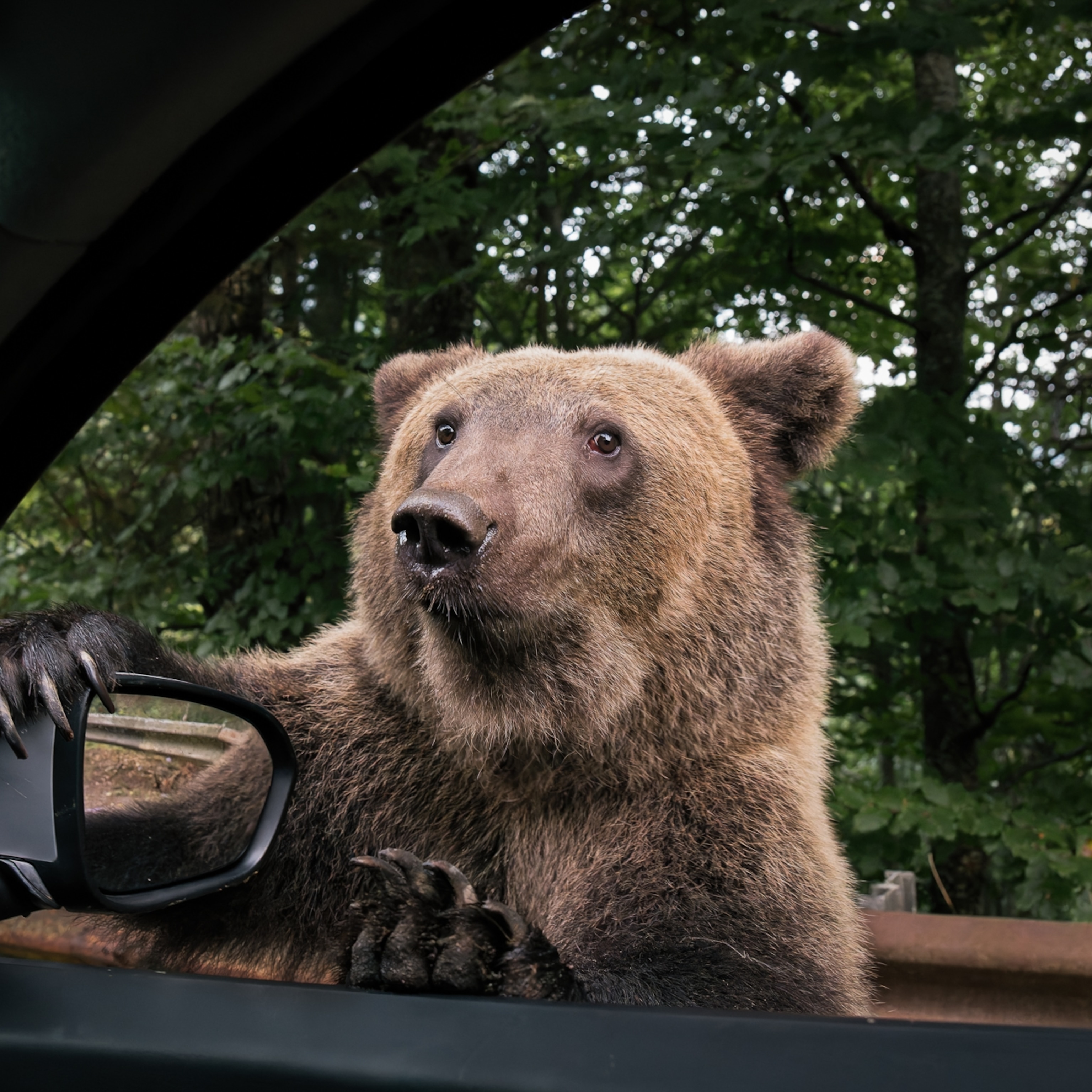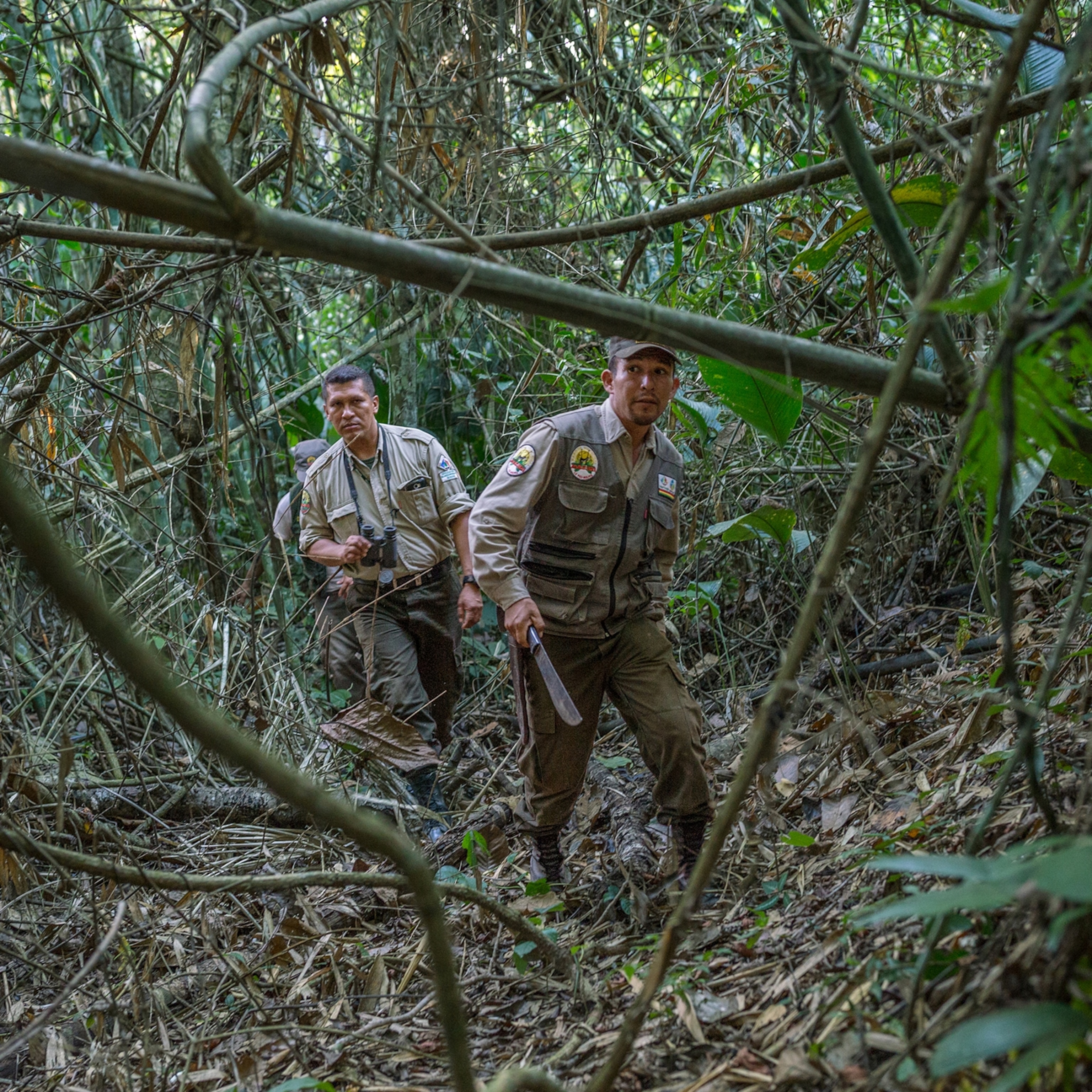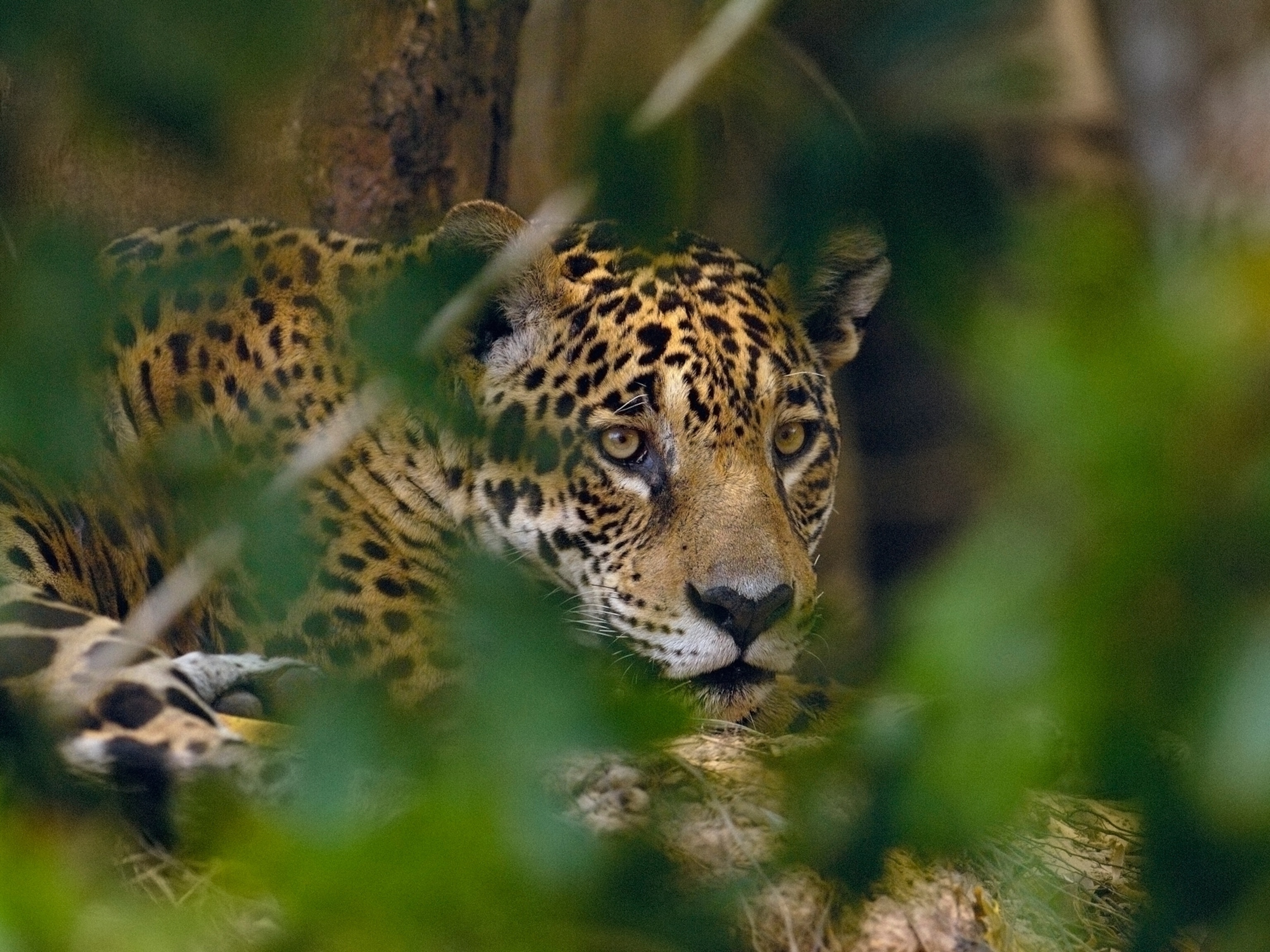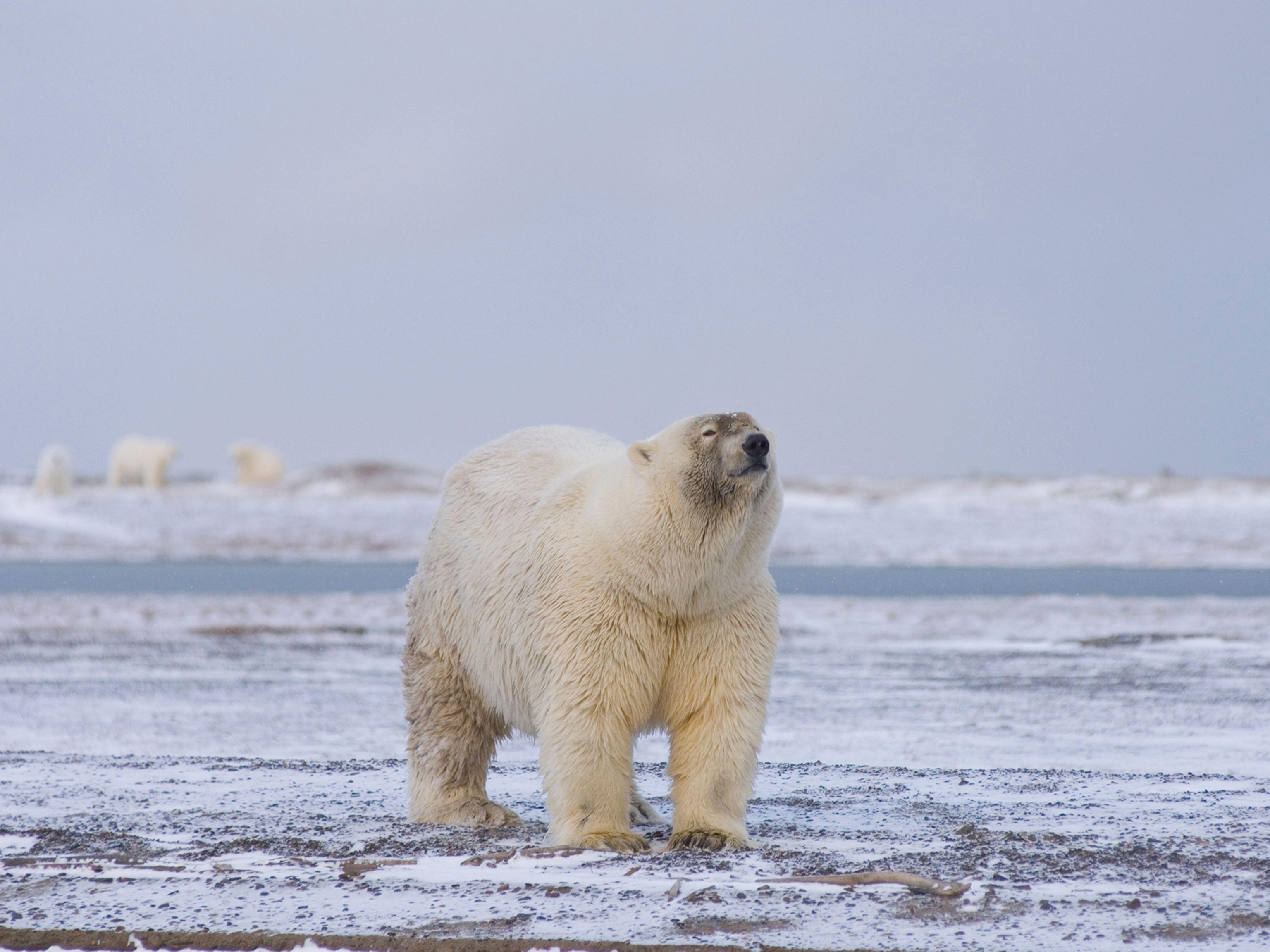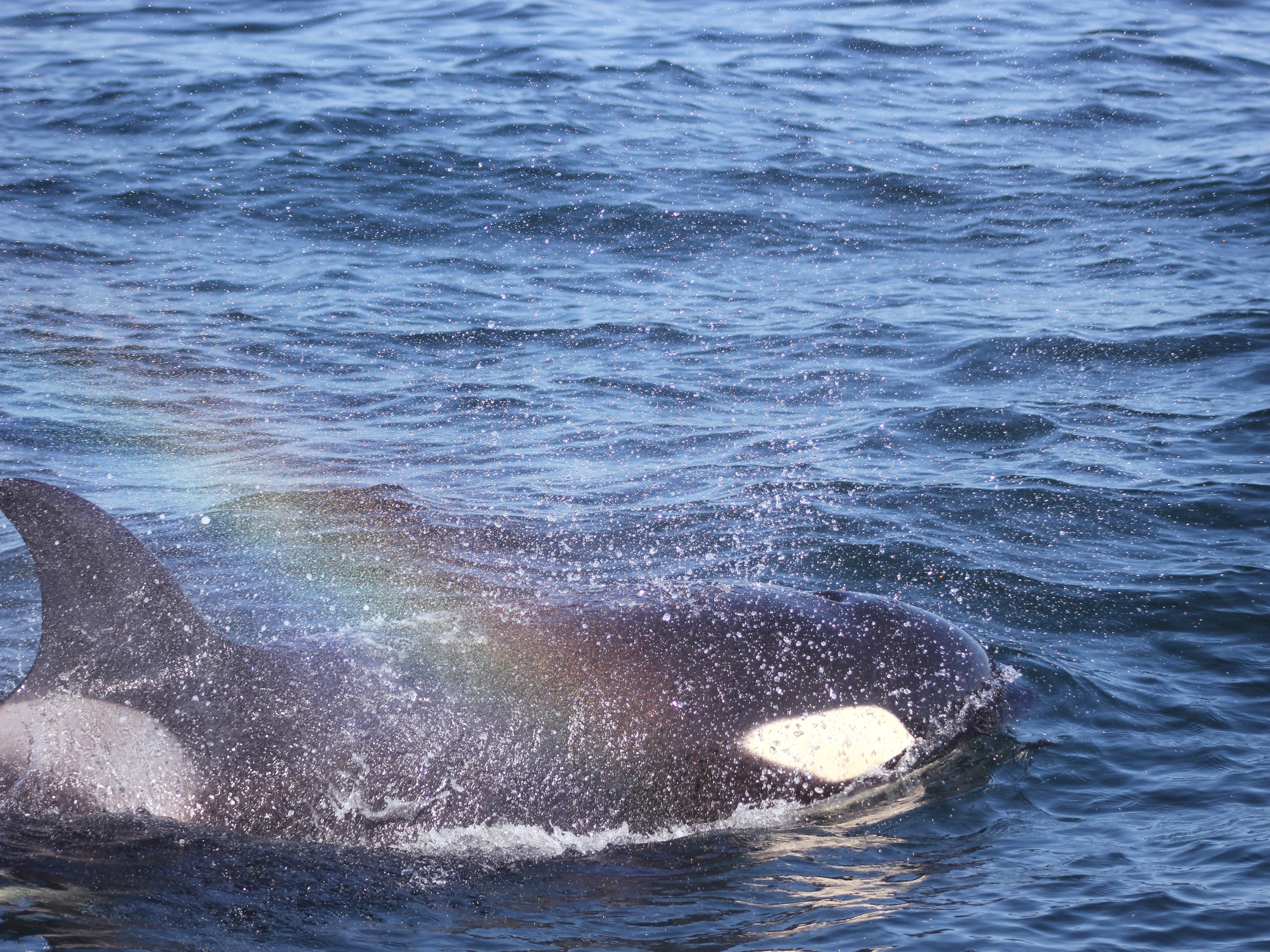
To save jaguars, he acts like a jaguar
In Panama, jaguars in fragmented territory have clashed with local ranchers and livestock. Now a National Geographic Explorer has a plan to turn the embattled species and ranchers into unlikely allies.
Pijibasal, Panama — What started as a leisurely walk through the rainforest has transformed into a punishing slog as the terrain grows more rugged and steep. At times, we’re almost blinded by the jungle’s density, but a few windows in the impenetrable growth provide a view of the horizon.
We’re following members of the Indigenous Emberá as we hack our way into the Darién Gap. Located in Panama's southernmost reaches, it's an isolated region both pristine and notorious—the smuggling of drugs and humans has become so intense that U.S. officials are considering sending troops there.
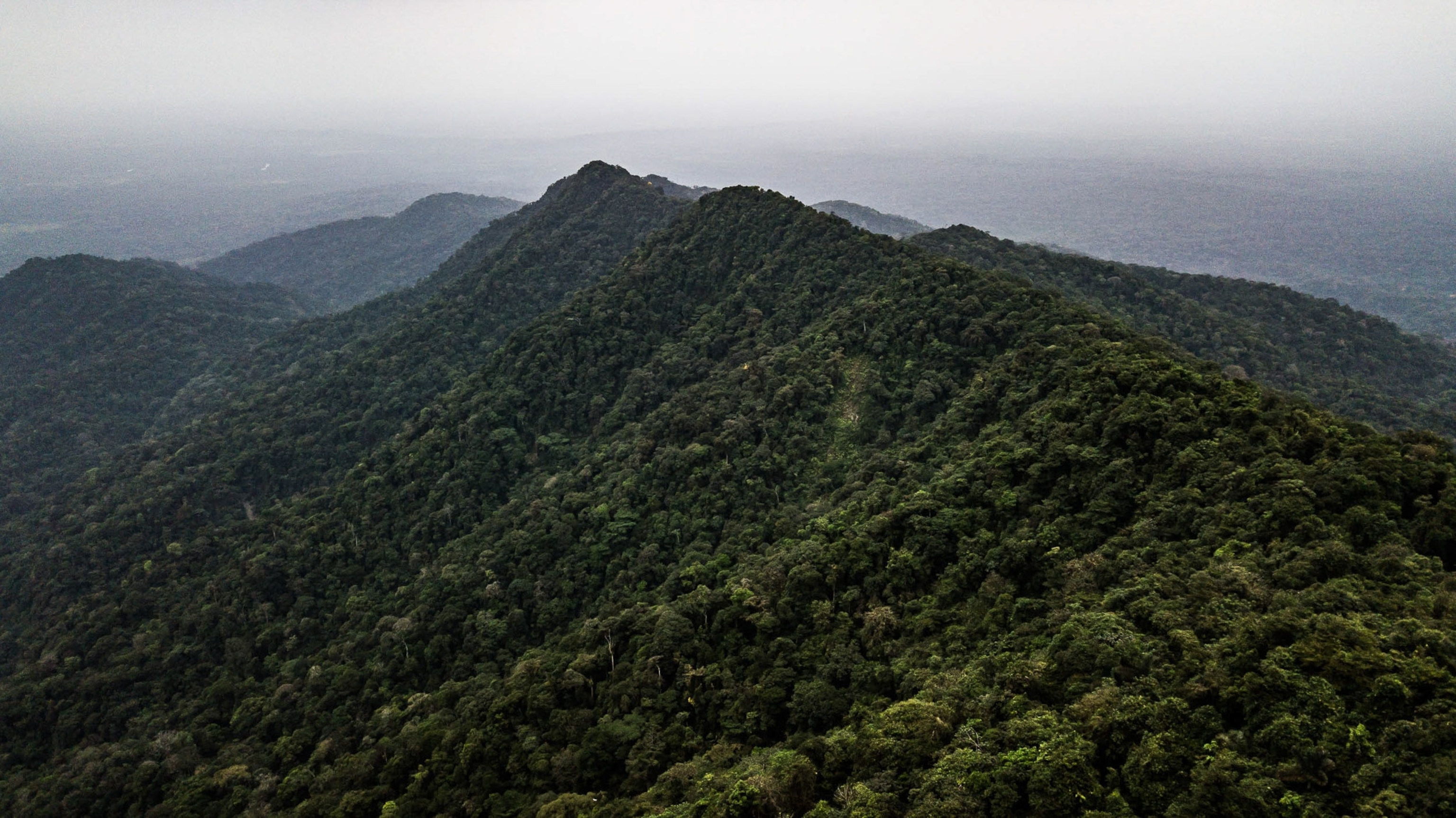
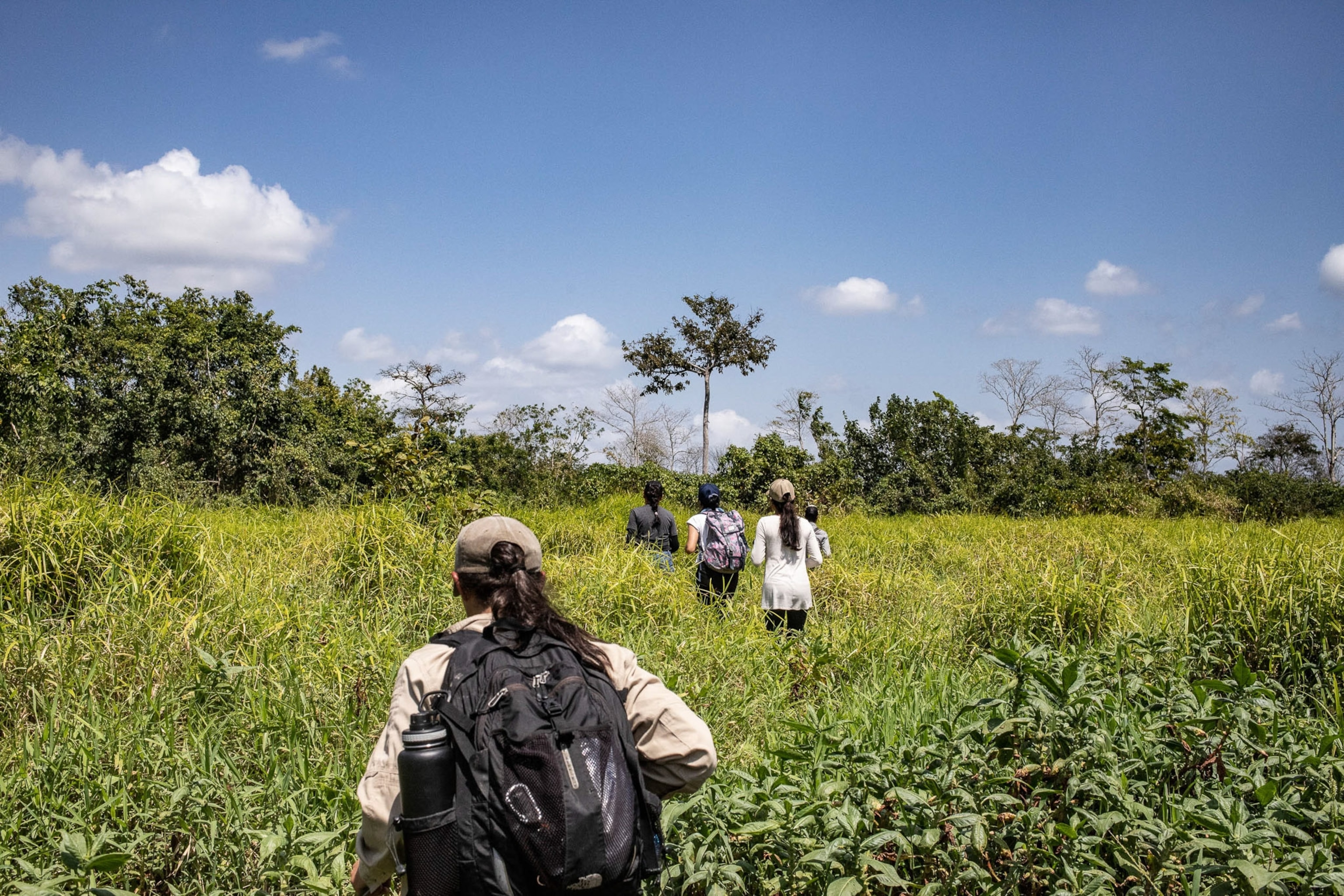
Part of a project with the Yaguará Panama Foundation, the Emberá are among a string of local communities dedicated to protecting the iconic big cat in their backyard: the jaguar.
“These cats are killed faster than they reproduce,” says National Geographic Explorer Ricardo Moreno, who leads the foundation and this expedition to install 74 camera traps around Darién National Park. “On the banks of the Panama Canal, for example, it’s close to reaching local extinction.”
Numbering under a thousand in Panama, the endangered species could disappear here within 50 years. Panthera onca may sit at the top of the food chain, but it’s been eliminated from half of its historic range, a sweeping arc from northern Mexico to Argentina. Over the last 20 years, as much as 25 percent of the adult jaguar population has been lost; fewer than 30,000 remain in the wild in the Americas.
Jaguars have been victims of the pet trade and poaching—for skins, fangs, and claws—and their habitat has been hit especially hard by encroaching development as well as clearing land for agriculture and grazing. In Panama, more than 40 percent of it has been lost since the mid-20th century. It’s forced jaguars to prey on livestock on farms bordering forests, spurring conflict with humans—a predicament for big cats the world over.
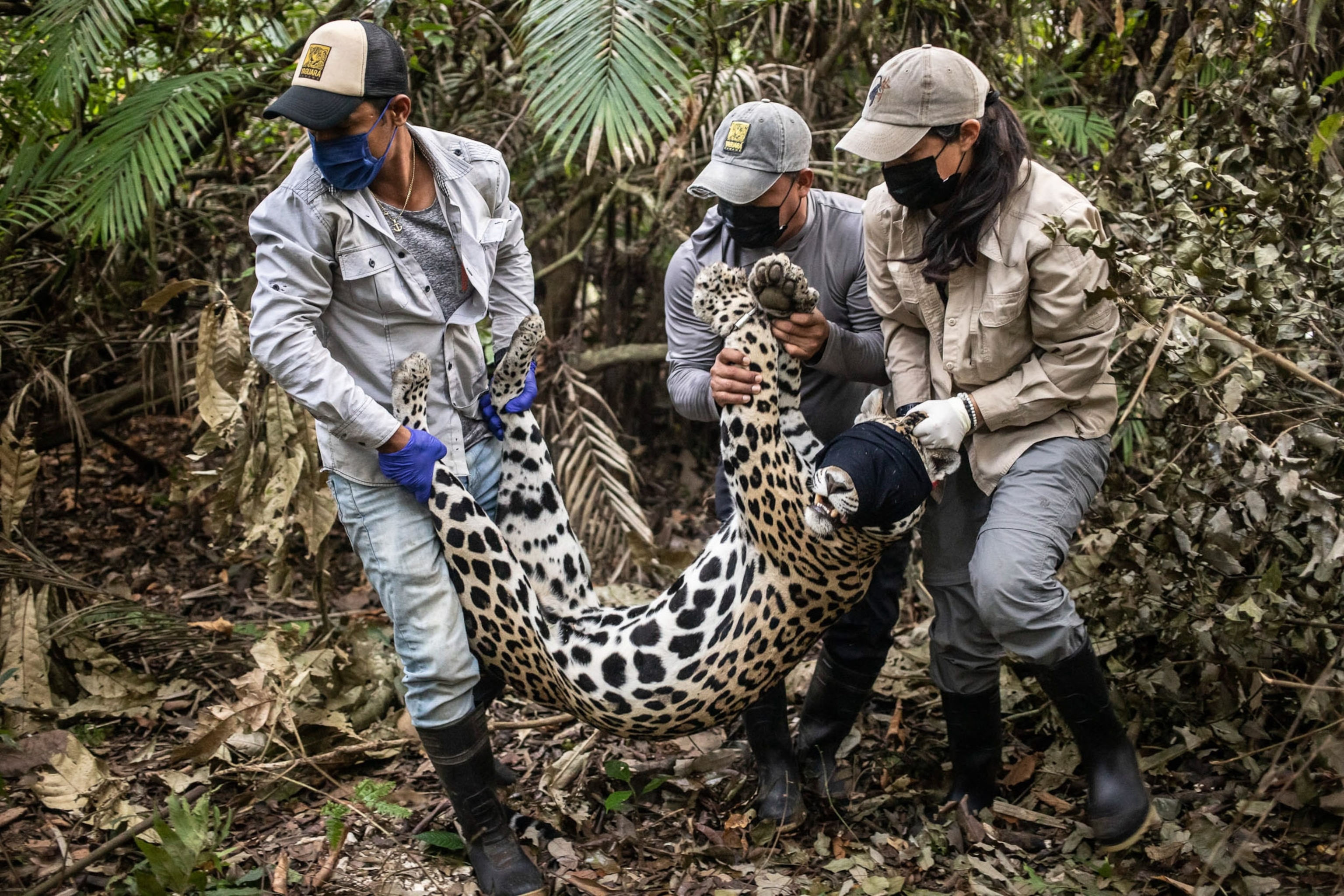
The animals are often hunted as payback for predation. “We’ve registered 381 deaths between 1989 and 2022—although it could be as high as 700—and about 96 percent are related to livestock conflicts,” says Moreno. “This means from 20 to 40 jaguar killings every year.”
With more than 1,900 camera traps placed in the country over the last decade (and increasingly GPS collars), the Yaguará team will study their elusive subject and better understand its numbers, range, migration patterns, and where it might come into contact with livestock. The data will help focus both conservation and management strategies for farmers and ranchers.
“Our priority is to do science with people,” says Moreno. Ultimately “conservation lies in the community. They’re the ones who will continue with this project in the long term, so we need to be perceived as a positive presence in their lives to demystify the jaguar and turn it into an ally, as a controller of species that prey on crops, like alligators, capybaras, deer, wild boars, and pacas. After all, if we help people, we help the jaguar.”
Minding the gap
Panama is part of the Mesoamerican Biological Corridor, which runs the length of the Central American isthmus, a natural bridge that unites the continental populations of jaguars and countless other species, promoting genetic flow.
Spanning 10,000 square miles on both sides of the border between Colombia and Panama, the Darién Gap is a crucial piece of the corridor and famously impregnable. Here, the Pan-American Highway comes to a screeching halt—thus “the gap” in the land route.
That inaccessibility has also fostered a lawless territory plagued by trafficking in arms, wildlife, drugs, and soaring numbers of migrants en route to the U.S. border.
Migrants move through another part of the gap, so they “haven't directly affected the local population of jaguars or our project,” says Moreno. “We have encountered them while entering or leaving Darién, witnessing the physical and emotional suffering they go through. That’s why we always try to bring them clothes or supplies.”
The area also draws illegal logging and mining. According to Panama’s environment ministry, this is where most of the country’s illegal deforestation occurs: more than 80 square miles were lost from 2012 to 2019.
Yet it also shelters Darién National Park, where Moreno's efforts are focused. At 2,200 square miles, it's the country’s largest protected area—an intact, almost out-of-the-Jurassic jungle.
For both the Emberá and Guna, the region’s main Native cultures, the mystical jaguar is the guardian of those forests. “By protecting it, we rescue the spirituality of the forest, and in turn, a sense of belonging,” says Leonardo Bustamante, an Emberá park ranger along for the trek.
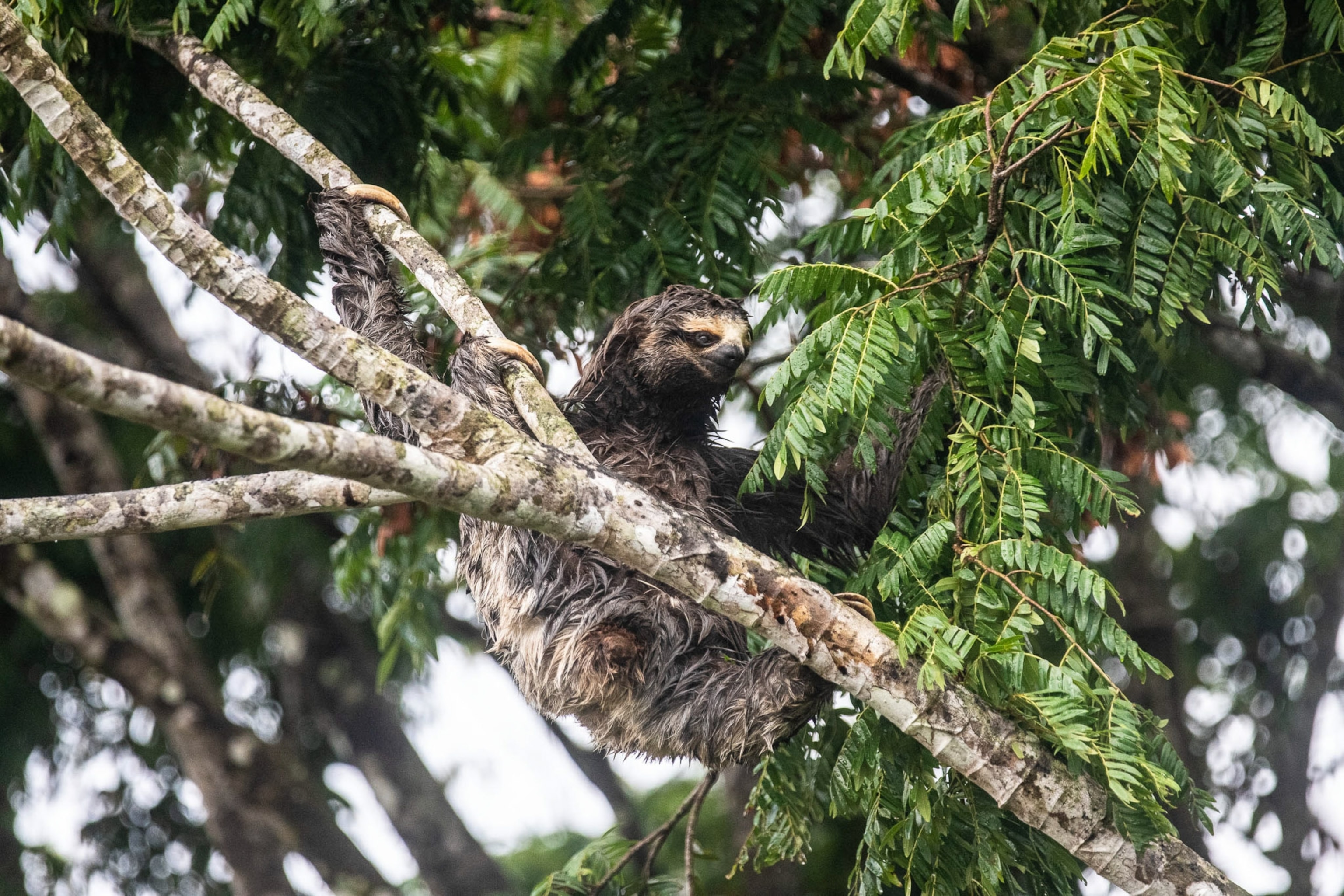

Getting down in the dirt
After hiking for four hours, we face the final push up the Cerro Pirre ridge, deep in the park. As I observe how Moreno and others scale an almost vertical wall of rocks they call “dirty chest,” I grasp for anything in reach: roots, tree trunks, lianas. Despite loose anchors, hidden thorns, and insects lurking in every corner, we crested the summit after an hour of scrambling.
Moreno begins crawling catlike on the forest floor, turning from one side to the other as if sniffing something. He collects feces that he recognizes as belonging to a jaguar. Suddenly his mysterious movements take shape: He’s measuring a new configuration for the camera traps.
By positioning himself as a jaguar would, based on the location of feces, Moreno maximizes the chances of capturing images of both sides of a jaguar—to get a fuller view of the rosettes, spots unique to each individual that are used for identification.
“The fecal samples reveal diet, gauging whether it’s wildlife or cattle,” Moreno says, shaking earth from his hands.
During the last decade, Yaguará has registered 73,556 “active nights” across the camera traps. “It’s not only delivered extensive data about jaguars but also other species,” says Moreno. His team has identified movement patterns, habitat connectivity, and population numbers estimated between 600 and a thousand.
Along with the collaring program, the data will feed a national jaguar census. Mexico was the first to tally the jaguar with precision, and Antonio de la Torre, a National Geographic Explorer who took part in that project, advises Yaguará on trapping techniques for collaring—employed on five of the 11 jaguars spotted on nearby cattle farms.
Meanwhile Yaguará’s human-wildlife coexistence strategies call for ranchers to adopt measures such as electric fencing, cowbells with alarms, modified pasture placement, maternity and calf areas, and night pens. Funds to support those changes come from a consortium of its partners, including the Global Environment Facility, the U.S. Fish and Wildlife Service, National Geographic Society, and the National Secretariat for Science, Technology, and Innovation.
“Losing an animal is very unfortunate for a farmer,” says rancher Erasmo De León. “It’s a month's maintenance for his family. And if he doesn't understand the jaguar, he’ll declare war immediately.”
He calculates each loss is worth between 700 and 800 dollars. “And there are neighbors who've had more than 40 predations,” he says.


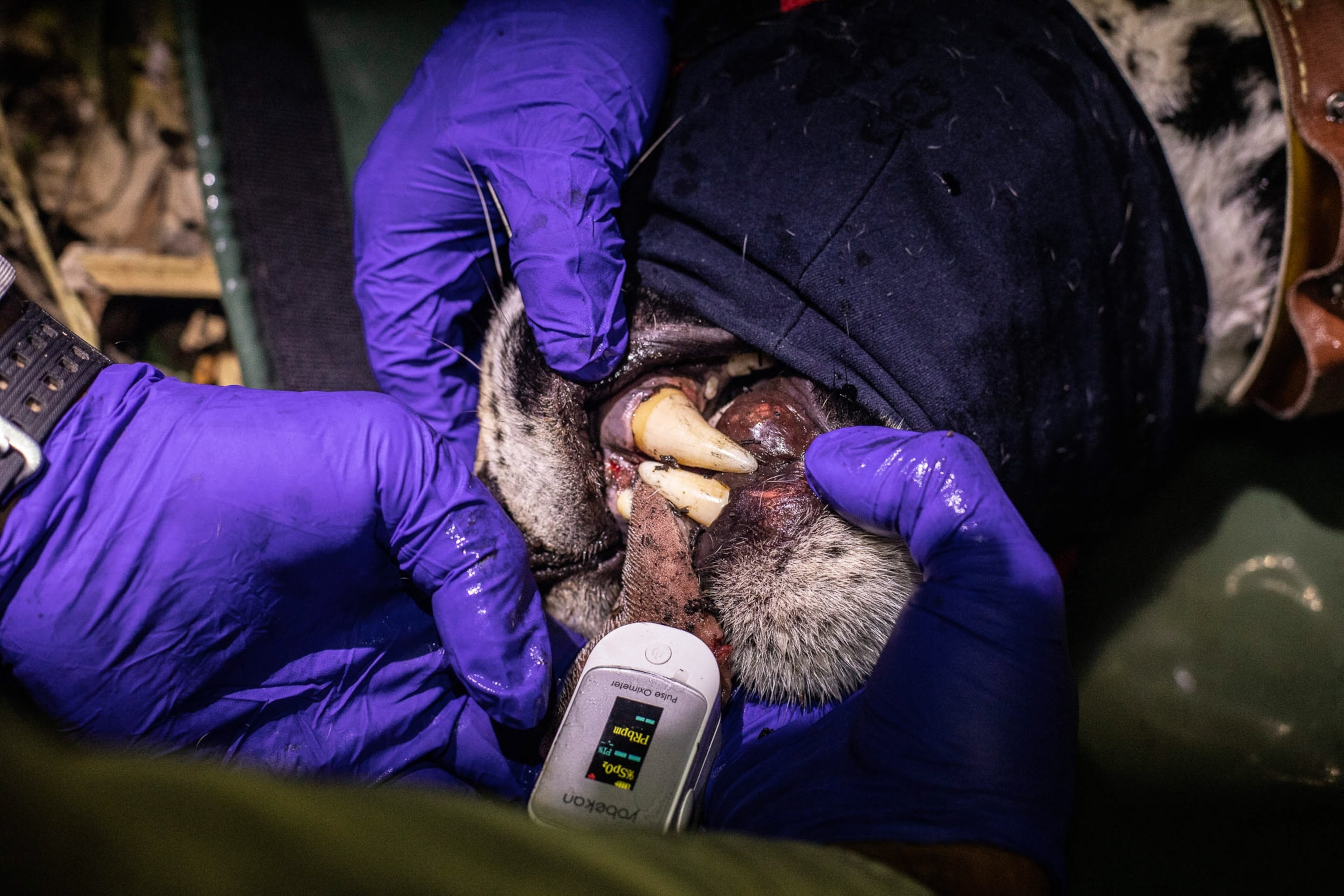
'If we help people, we help the jaguar'
As ecotourism rises, these locals stand to benefit by having a stake in the new industry. Ranchers for more than 20 years, Erasmo De León and his wife, Elsie Quintero, now host people on their property in Agua Buena de Punuloso, just outside the park, providing tours as guides for bird watching and wildlife tracking.
“We haven't had any jaguar deaths on our farms since 2017,” says Quintero. The strategies appear to be working. They’ve led to “understanding the dynamics of our ecosystem,” she adds. “And above all, thinking about sustainable management and tourism as subsistence for our families.”
Now they’re part of an even larger mission. She and De León have joined five other farms in a program to preserve their forest patches with a goal to help rebuild the Mesoamerican corridor, fragmented by development. Yaguará hopes to recruit another 14 ranches. The effort ties into Panama’s plan to restore one million hectares (2.4 million acres) of forest by 2035.
(Read about how ranchers similarly are helping to build Florida’s wildlife corridor, allowing the state’s panther to gain a foothold.)
Back on Cerro Pirre, the Emberá field staff have set up camp and will continue installing cameras for the next several days. With training, these locals from nearby villages like Pijibasal now form a network of overseers to monitor camera traps. That’s additional income for a community primarily focused on agriculture.
Moreno and I head back down to the park entrance. As we found our way out with flashlights and on swollen feet, Moreno reflected on the project. “If you bring people together for the common benefit, things can go well,” he says, “especially when communities are empowered, trained, and well equipped.”
Two days after my departure from Panama, the team confirmed the capture of a jaguar—a sighting that had eluded me—and a successful collaring. A couple of hours later, a second paw trap was activated. “Two in one morning—must be for the Guinness World Records,” Moreno told me by phone.
The two female jaguars log about four miles a day, and one returns to the same spot, so researchers suspect it has kittens. It’s a seed of hope. “Even in an area dominated by humans and cattle,” said Moreno, “jaguars are still reproducing.”

